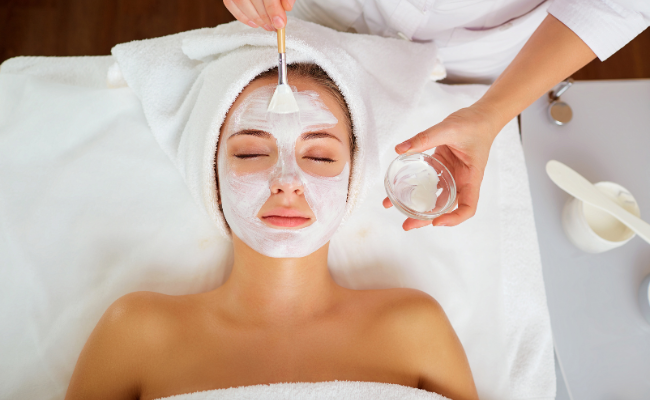How to Treat Facial Discoloration?
- November 09, 2023
- No Comments

What is Facial Discoloration?
Facial discoloration, also known as hyperpigmentation or melasma, is a skin condition in which certain areas of the face become darker than the surrounding skin. It occurs when there is an overproduction of melanin, the pigment responsible for the color of our skin, hair, and eyes. Several factors can contribute to the development of facial discoloration, including sun exposure, hormonal changes, inflammation, and genetic predisposition.
Why Does Facial Discoloration Occur?
There are several reasons why facial discoloration can occur:
- Sun Exposure: Prolonged exposure to the sun's harmful UV rays is one of the most common causes of facial discoloration. The sun stimulates the production of melanin as a defense mechanism, leading to the formation of dark spots on the skin.
- Hormonal Changes: Hormonal fluctuations, such as those that occur during pregnancy or while taking birth control pills, can trigger an increase in melanin production, leading to melasma, a type of facial discoloration.
- Inflammation: Skin inflammation, whether due to acne, eczema, or other skin conditions, can leave behind post-inflammatory hyperpigmentation. This type of discoloration occurs as a result of the skin's healing process.
- Genetics: Some individuals are genetically predisposed to developing facial discoloration. If your family has a history of melasma or other pigmentation issues, you may be more likely to experience them as well.
How to Treat Facial Discoloration?
Treating facial discoloration can be a challenging process, and the effectiveness of the treatment may vary depending on the cause and severity of the condition. There are several treatment options available, ranging from topical creams to more advanced medical procedures. Here are some common approaches to treating facial discoloration:
- Topical Treatments: Over-the-counter and prescription topical treatments containing ingredients like hydroquinone, retinoids, glycolic acid, and kojic acid can help lighten and fade dark spots. These products work by inhibiting melanin production and promoting skin cell turnover. It's important to use these products consistently and as directed to see results.
- Chemical Peels: Chemical peels involve the application of a chemical solution to the skin to exfoliate the top layer. This can help reduce the appearance of dark spots and improve overall skin tone. The intensity of the peel can be adjusted based on the severity of the discoloration.
- Microdermabrasion: This non-invasive procedure involves the use of a machine to exfoliate the skin's surface. It can be effective in improving the appearance of mild to moderate facial discoloration by promoting the growth of new, even-toned skin.
- Laser Therapy: Various laser and light-based therapies can target melanin in the skin and break down excess pigmentation. Intense pulsed light (IPL) and fractional laser treatments are among the options available. These procedures are typically performed by dermatologists or trained professionals.
- Prescription Medications: In cases of severe facial discoloration or melasma, a dermatologist may prescribe medications that can help regulate melanin production or address underlying causes.
- Sun Protection: Preventing further discoloration is essential. Regular use of broad-spectrum sunscreen with a high SPF is crucial to shield the skin from UV rays. Sunscreen also helps prevent existing discoloration from worsening.
- Camouflage Makeup: Using makeup to conceal facial discoloration is an immediate and effective solution. Various concealers and foundations are available for this purpose. They can help even out the skin tone and boost confidence.
Benefit Points of Treating Facial Discoloration:
- Improved Self-Confidence: Treating facial discoloration can significantly boost self-esteem and confidence. When dark spots and patches are reduced or eliminated, individuals often feel more comfortable in their own skin and are less self-conscious about their appearance.
- Enhanced Skin Health: Many treatment options for facial discoloration, such as sun protection and exfoliation, promote overall skin health. Regular sunscreen use can prevent further damage, while exfoliation helps remove dead skin cells and encourages the growth of new, healthy skin.
- Even Skin Tone: Treating facial discoloration results in a more even skin tone. This can provide a younger and healthier appearance, making the skin look more radiant and vibrant.
- Reduced Risk of Skin Damage: Continuous exposure to the sun without protection can lead to skin damage and increase the risk of skin cancer. By treating facial discoloration and adopting preventive measures, such as sunscreen use, individuals can reduce their risk of skin damage.
- Personalized Treatment Options: There are various treatment options available, which means individuals can choose the one that suits their needs and preferences. Some may prefer non-invasive treatments like topical creams, while others may opt for more advanced procedures like laser therapy.
Comments (0)